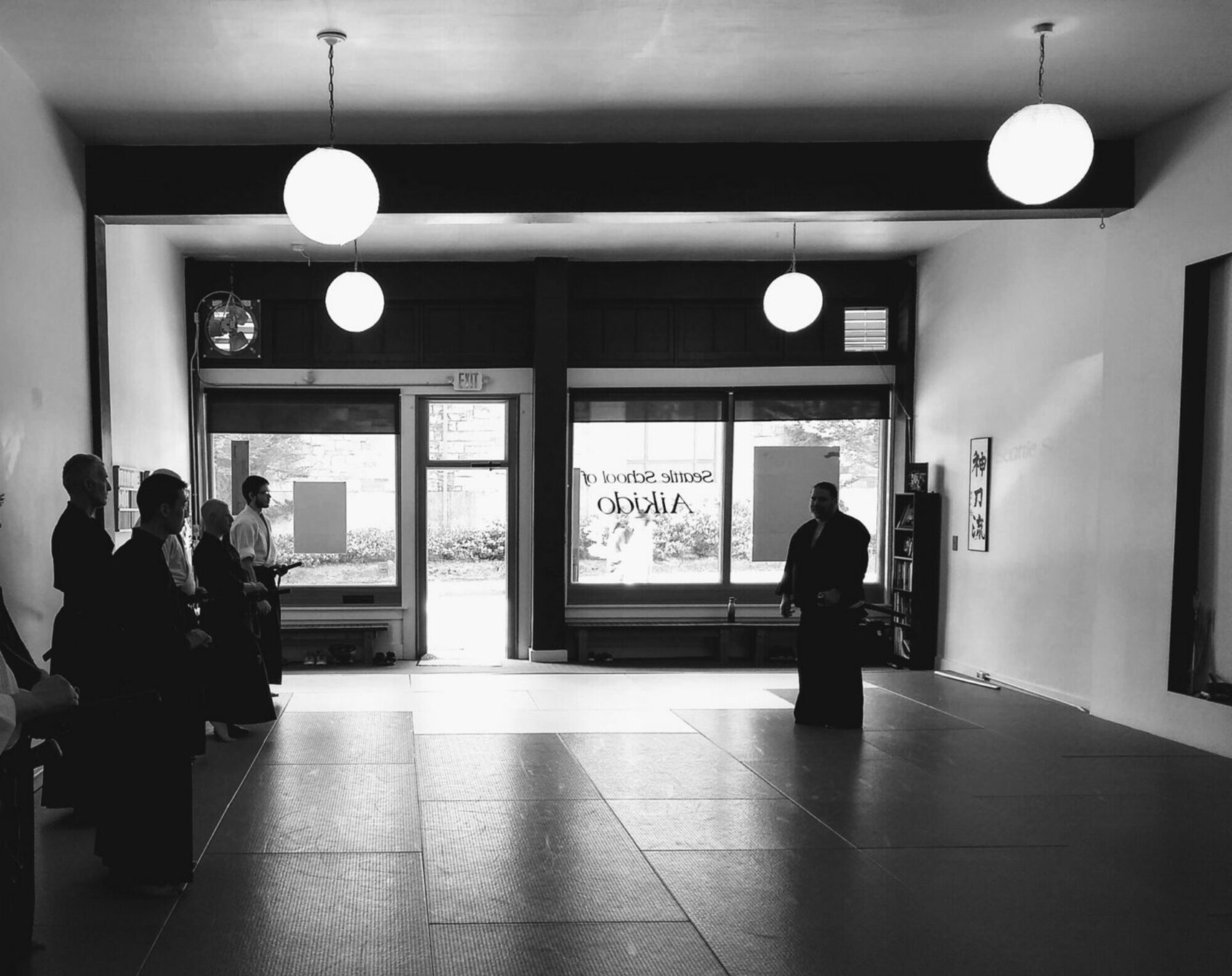Welcome to the Japanese Fighting Arts Northwest website! Here you’ll find information about us, our instructors, our training, where to find us, and more.
What is JFANW?
Japanese Fighting Arts Northwest is a group of friends and martial artists dedicated to improving themselves and their arts. The current curriculum consists of weapons work (sword, staff, and knife), open-hand arts (striking and grappling), and foundational body skills that support and inform the combative arts. Unlike many schools of Iaido and Aikido that downplay the combative qualities of those arts, JFANW acknowledges the historical roots of the arts as practical combative systems.
We’ve struggled at times to accurately present what it is that we actually do, and the name “Japanese Fighting Arts” is a way to simplify who we are and what we study. What appears to be several disparate classes and arts are actually different aspects of one logical martial system. Rather than create a modern ryu-ha or found a “style” of martial arts, we are choosing to preserve the individuality of the respective arts that we study, while being clearer with the fact that these arts are related by more than where they happen to be taught.
About Our Arts and Influences
JFANW is the combined martial arts experience of Christian Moses, Jeremy Hulley, and others we have shared this journey with. Specifically our training can be broken down into three distinct but related areas.
Budo Tanren (martial forging)
This material is similar to qi gung, yoga, or what is sometimes called “internal power” training. Drawing influences from various teachers including Neil Yamamoto and Akuzawa Minouru (Aunkai), the majority of the material is based on Dan Harden’s Sangenkai system. While we are not affiliated in any way at this time with Dan Harden or the Sangenkai, his influence on us and our martial arts is undeniable and we will be forever grateful for what we learned in the 8 years of our relationship. The fundamental skills and principles of Budo Tanren form the foundation of Aikibudo and Shinto Ryu, which offer the opportunity to explore those principles in more practical ways.
Aikibudo (martial way of aiki)
While many students of the martial arts may be familiar with Aikido, the name Aikibudo is less common. Superficially there are many similarities between JFANW’s take on Aikibudo and Aikido, but we feel that Aikibudo is a better way to describe what we do. Primarily based on the material we learned as part of the Icho Ryu private instructor dojo of Neil Yamamoto, Aikibudo combines aspects of Aikido, Aikijujutsu, Aiki weapons work (sword, staff, knife), Judo, and striking. In very simple terms, Aikibudo differs from most Aikido in that the practitioner is explicitly learning to control and potentially injure their attacker. Rather than throw opponents outwards or “use their force against them” as is taught in Aikido, we aim to compromise our opponent and throw them downward so that they can be restrained or prevented from continuing the conflict. We have chosen to let go of the name Icho Ryu as Bernie Lau has resumed teaching and awarding rank with that name and we feel that what we do is very different than what is now being taught under that name. Rather than found a goshin ryu-ha (formal non-Japanese school) we chose to simply call what we do “Aikibudo” which the term Neil Yamamoto preferred to use to describe his art.
Shinto Seibu Ryu Iai-battojutsu (Divine Sword True Martial School of drawing and striking)
Shinto Ryu was founded in 1890 by Hibino Raifu and was spread through Japan as a martial and cultural asset. Originally a kenbu (sword dance) and gekkiken (early Kendo) tradition it eventually became a style of iaido with an emphasis on tameshigiri (target cutting). Brought to Seattle by Robby Pellett in the early 90s, it is taught today by Christian Moses and Jeremy Hulley who hold Renshi (full teacher) licenses and are the heads of Shinto Ryu USA. Shinto Ryu is a dynamic sword art that emphasizes precision, power, and clarity of movement. The curriculum includes solo kata (forms) using shinken (real swords) or iaito (dull practice weapons) as well as tameshigiri (target/test cutting), paired kata, and some additional short weapon forms introduced by our teacher in Japan, Mochizuki Takeshi.
Read more about Shinto Seibu Ryu Iai-Battojutsu here.
Blog
Aiki, Kuzushi, and Tomei na Chikara (Transparent Power)
Last month I realized that I’d either given away my copy of “Transparent Power” by Kimura Tatsuo or I’d read a borrowed copy. Either way, it had been quite a few years and a lot of training hours since I read it last, so I ordered another copy. For those not familiar, “Tomei na Chikara” …
Continue reading “Aiki, Kuzushi, and Tomei na Chikara (Transparent Power)”
JFANW at Lonin League’s Kagami Biraki 2025
JFANW is a Safe Space
With the upcoming political changes in the US, we at Japanese Fighting Arts NW need to be explicit that we are a safe space for all races, genders, ages, and sexual orientations. We will not tolerate intolerance, and we promise you will not find a more welcoming space to train. In-person community is going to …
Contact Info, Hours, and Address
For information about us please email info@jfanw.com or call us at 206-385-6668.
Current Schedule:
Shinto Seibu Ryu Iai-Battojutsu: Saturdays from 1 – 2 PM
Aikibudo and Budo Tanren: Saturdays from 2-3:30 PM and Tuesdays from 7-8 PM
Location:
Aikido Seattle
1004 Turner Way E, Seattle, WA 98112
Aikido Seattle – Google Maps
Please note that while we are a private dojo, visitors are welcome.
